There isn’t a person alive who hasn’t seen the Moon in the sky and noticed it changing shape. We’ve all watched it change from night to night, from a crescent to a half and then to full. It then seems to disappear from the night completely before returning, a few weeks later, to the evening sky again.
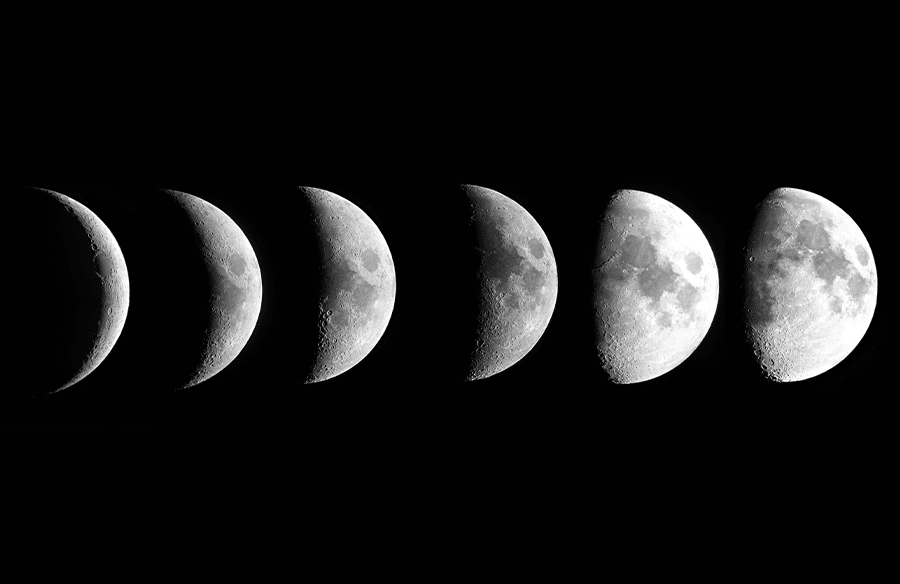
This must have seemed very confusing to ancient astronomers, but fortunately, we know more about the cosmos today than we ever did before. So why does the Moon have phases? Why does it sometimes appear in the evening and then re-appear in the morning? How can we predict when the Moon will re-appear next?
Contents
What Are the Phases of the Moon?
The Moon goes through eight phases over the course of roughly four weeks. These phases are:
- New Moon
- Waxing Crescent
- First Quarter
- Waxing Gibbous
- Full Moon
- Waning Gibbous
- Last Quarter
- Waning Crescent
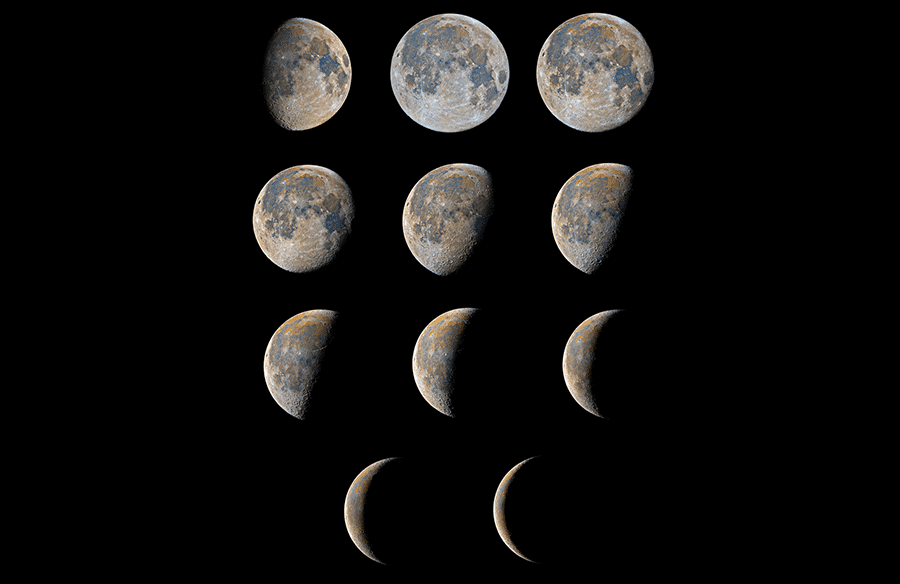
The new Moon is typically all but invisible as it is too close to the Sun in the sky. Phases two to four, crescent, first quarter and gibbous, when the Moon is waxing, are all visible in the evening sky.
The fifth phase, the full Moon, is visible throughout the entire night, as the Moon is opposite the Sun in the sky. As a result, the Moon rises at sunset and then sets at sunrise.
Phases six to eight, gibbous, last quarter and crescent, occur when the Moon is waning and are best seen in the morning sky.
What Does It Mean When the Moon is Waxing and Waning?
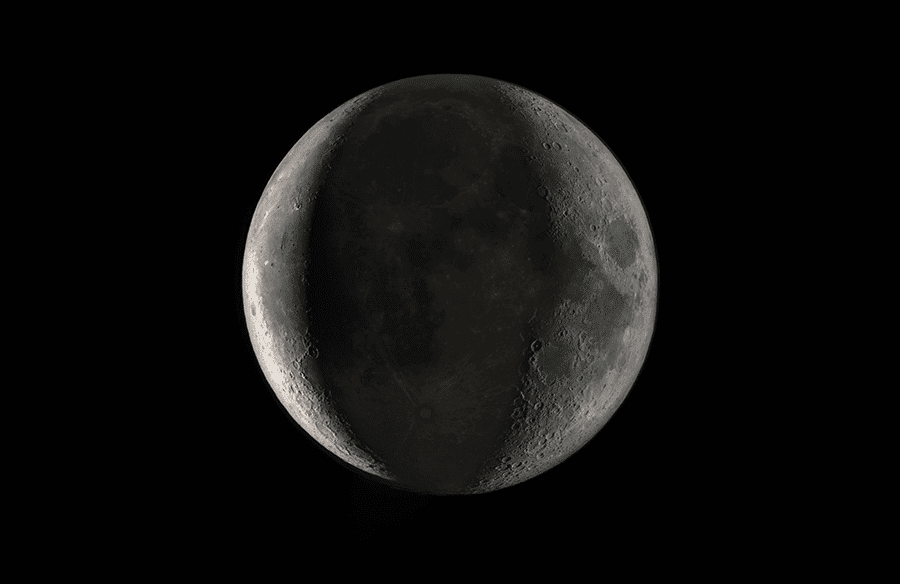
Once the Moon has started its cycle by turning new, it’s said to be waxing. When this happens, its disc appears to grow fuller; it starts as a thin crescent, becomes a half Moon and then turns full.
After turning full, we say the Moon is waning. This means its disc now appears to thin; from being full, it shrinks to a half Moon before slimming down to a thin crescent. It then disappears completely as the Moon turns new and the cycle begins again.
Why Does the Moon Have Phases?
Like the Earth, the Moon produces no light of its own but simply reflects the light it receives from the Sun. The phase we see from Earth is determined by where the Moon is in its orbit, and how much of its surface we can see from Earth.
In order to understand how the Moon’s phases occur, it’s sometimes best to simulate them for yourself. We can easily do this with a bright light to represent the Sun, a basketball for the Earth and a tennis ball (or something smaller) to represent the Moon.
(Incidentally, this exercise will also help to explain why the Moon always keeps the same side turned toward us.)
First, grab a black marker and draw a line around the circumference of the tennis ball. Now draw black marks on one side of the ball; this will be the side of the Moon we can see from Earth.
You’ll need darkness for this, so be sure to wait until night falls or pull the curtains tightly closed!
Place the basketball in the middle of the floor with the light about six to ten feet away from it. Next, place the tennis ball about a quarter of the way between the basketball and the light. Make sure the side with the markings is facing the basketball.
Now turn on the light and stand above the basketball, facing the light. This scene depicts the position of the Earth (basketball), Moon (tennis ball) and Sun (light) when the Moon is between the Earth and the Sun in its orbit.
Imagining the New Moon
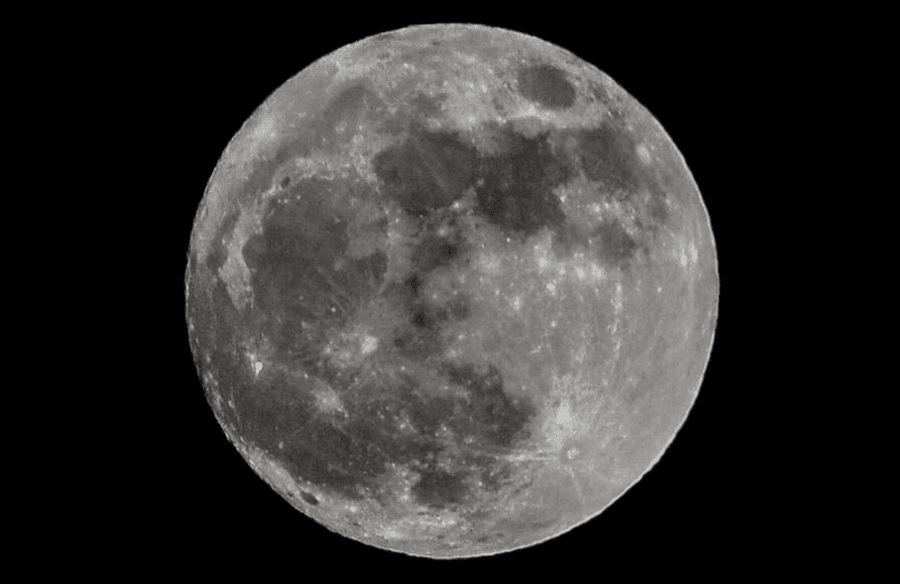
This is the position of the Moon at New Moon, which is the start of the lunar cycle. You’ll notice that the marked side of the Moon is in darkness, so even though it’s facing the Earth, it’s invisible.
You’ll also notice that the marked side of the Moon is facing the daylight side of the Earth. This being the case, even if the marked side was brightly lit, it would still be invisible from the unlit half of the Earth, where it is night.
The Half Moon at First Quarter
The Moon orbits the Earth in a counter-clockwise direction. To show this, move the tennis ball so that it’s in the nine o’clock position in relation to the basketball.
The Moon takes roughly four weeks to complete an orbit of the Earth, so at this point about a week has passed since it turned new.
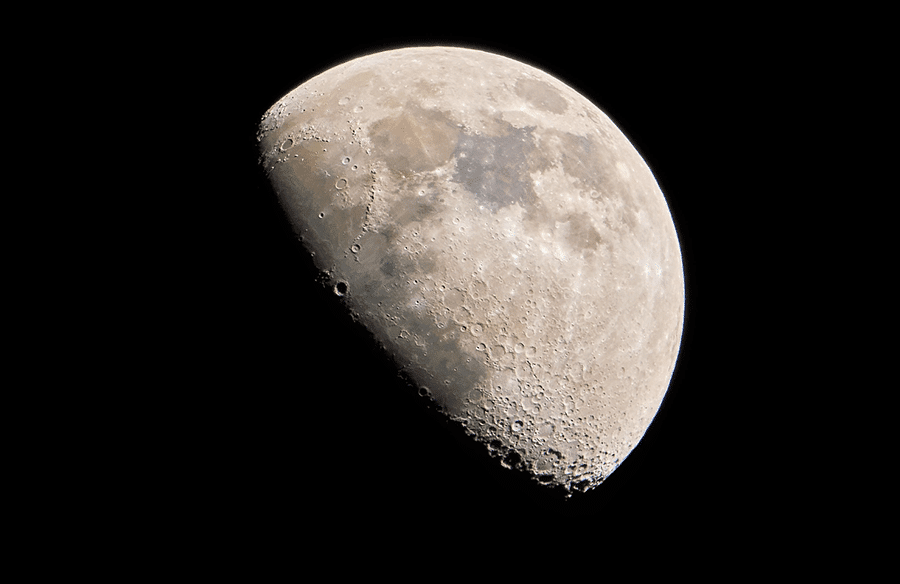
The Moon has now completed a quarter of its orbit. It takes the same time to spin on its axis as it does to orbit the Earth, so you’ll also need to rotate the tennis ball counter-clockwise by a quarter turn. Notice that the entire marked side is still facing the basketball, just as the same side of the Moon always faces the Earth.
Stand over the basketball and look down on the Earth and you’ll see that sunlight is illuminating half the Moon’s marked side. When the Moon is in this position, we see a half Moon in the sky.
You might also notice that the Moon is visible from half the daylight side of the Earth and half the night side. As the Earth rotates in a counter-clockwise direction, this means the left side of the basketball represents the afternoon and evening on Earth.
The dividing line between day and night on any world (for example, the Earth or Moon) is called the terminator. The left side of the terminator on the basketball represents sunset, while the right side of the terminator represents dawn.
The Moon is now aligned with the terminator on the left, and so the first quarter phase is best seen at sunset, when it will be highest in the sky and roughly toward the south.
Full Moon – The Halfway Point
One week later and the Moon has moved another quarter along its orbit. We can simulate this by moving the tennis ball counter-clockwise so that it’s in the six o’clock position in relation to the basketball.
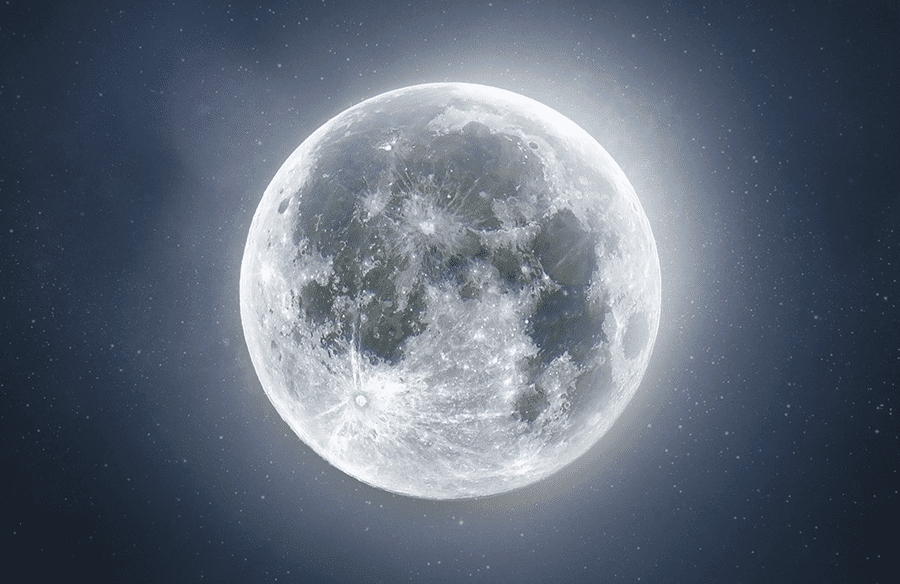
To simulate the rotation of the Moon, you’ll also need to rotate the tennis ball a quarter turn counter-clockwise. Again, you’ll notice the marked half, representing the “face” of the Moon, is now turned toward the Earth.
You should now have the Earth (basketball) directly between the Sun (light) and the Moon (tennis ball.) The Moon is two weeks into its four-week orbit and is therefore halfway through both its orbit and its phases. This is the Full Moon.
Since the Moon is directly opposite the Sun, it rises at sunset and sets at sunrise. You’ll also notice the Moon’s sunlit side is facing the middle of the darkened half of the Earth. This means the full Moon is due south and highest in the sky at midnight.
The Last Quarter Moon in the Morning
After turning full, the Moon then wanes and moves around to the morning side of the Earth. One week after turning full, the Moon reaches third, or last quarter, so-called because it has moved through three-quarters of its orbit and is now entering the last quarter.
Move the tennis ball (Moon) around so that it’s in the three o’clock position in relation to the basketball (Earth.) Simulate the rotation of the Moon by turning the tennis ball counter-clockwise another quarter turn. Again, its marked surface is facing the basketball.
Like the first quarter, half the Moon’s surface appears illuminated when seen from Earth. However, this time it’s the other half of the marked surface that is lit.
Also like the first quarter, the Moon’s terminator is now aligned with the Earth’s, but since the Moon is on the morning side of the Earth, it appears highest over the southern horizon at sunrise, instead of at sunset.
Crescent and Gibbous – The In-Between Phases
Now that you know more about the new Moon, first quarter, full Moon and last quarter, let’s take a step back and consider the crescent and gibbous phases. These are the phases that occur between the half Moon and either the new or full Moon.
For example, the Moon appears as a waxing crescent in the evening sky from a day or so following the new Moon, and up to roughly a day before the first quarter. To simulate this, place the tennis ball (Moon) about midway between the 12 o’clock and 9 o’clock position in relation to the basketball (Earth.)
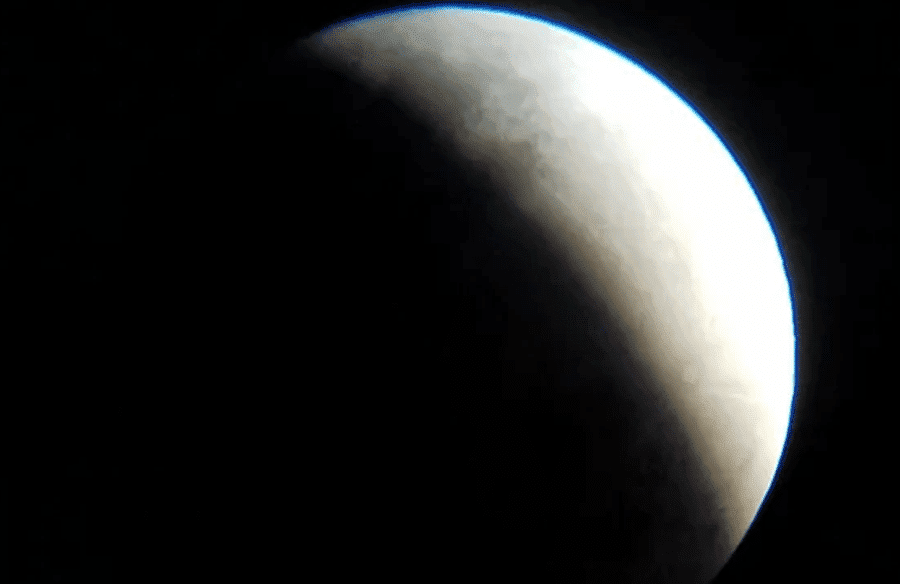
If you look at the Moon from the vantage point of the Earth, you’ll see that it’s about a quarter to a third illuminated and has a crescent shape.
It’s a similar story when the Moon is a gibbous. This occurs between roughly a day after the first quarter and a day before full Moon. During this time, the Moon is best seen in the late afternoon and evening, but with approximately two-thirds to three quarters of its surface illuminated, it will have an unusual, convex shape.
Again, we can simulate this by placing the tennis ball midway between the nine o’clock and six o’clock positions in relation to the basketball.
To simulate a waning gibbous, move the tennis ball to a point midway between the six o’clock and three o’clock positions. Since the Moon is now past full, it’s predominantly visible in the hours after midnight through mid-morning.
Lastly, a waning crescent can be simulated by placing the tennis ball between the three o’clock and twelve o’clock positions. It’s also facing the morning sunlit portion of the Earth, and so the Moon is visible from shortly before dawn to shortly after midday.
Knowing When & Where to Look For the Moon
Once you understand the phases of the Moon, it becomes easy to know when and where to look for it. As mentioned before, waxing phases occur between the new and full Moon, when the Moon appears to be growing fuller, and are always best seen in the evening. Waning phases occur between the full and new Moon, when the Moon appears to be growing thinner and are always best seen in the morning.
First quarter Moon occurs roughly a week after new Moon. The Moon rises at around midday, is over the southern horizon at sunset, and then sets at around midnight. Full Moon occurs a week later, or roughly two weeks after the new Moon. It rises at sunset, is over the southern horizon at midnight, and sets at around sunrise.
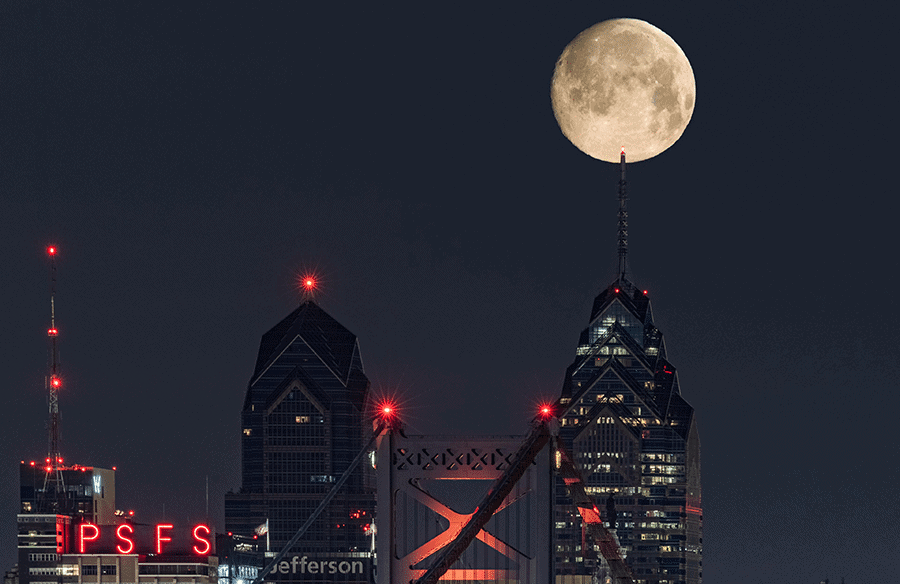
Finally, the Moon reaches last quarter one week after turning full, three weeks after the last new Moon and one week before turning new again. It rises at around midnight, is over the southern horizon at dawn, and then sets at around midday.
There may be an entire universe to explore, but our nearest neighbor can still prove to be a captivating sight, and knowing when and where to look for it is just the start!

